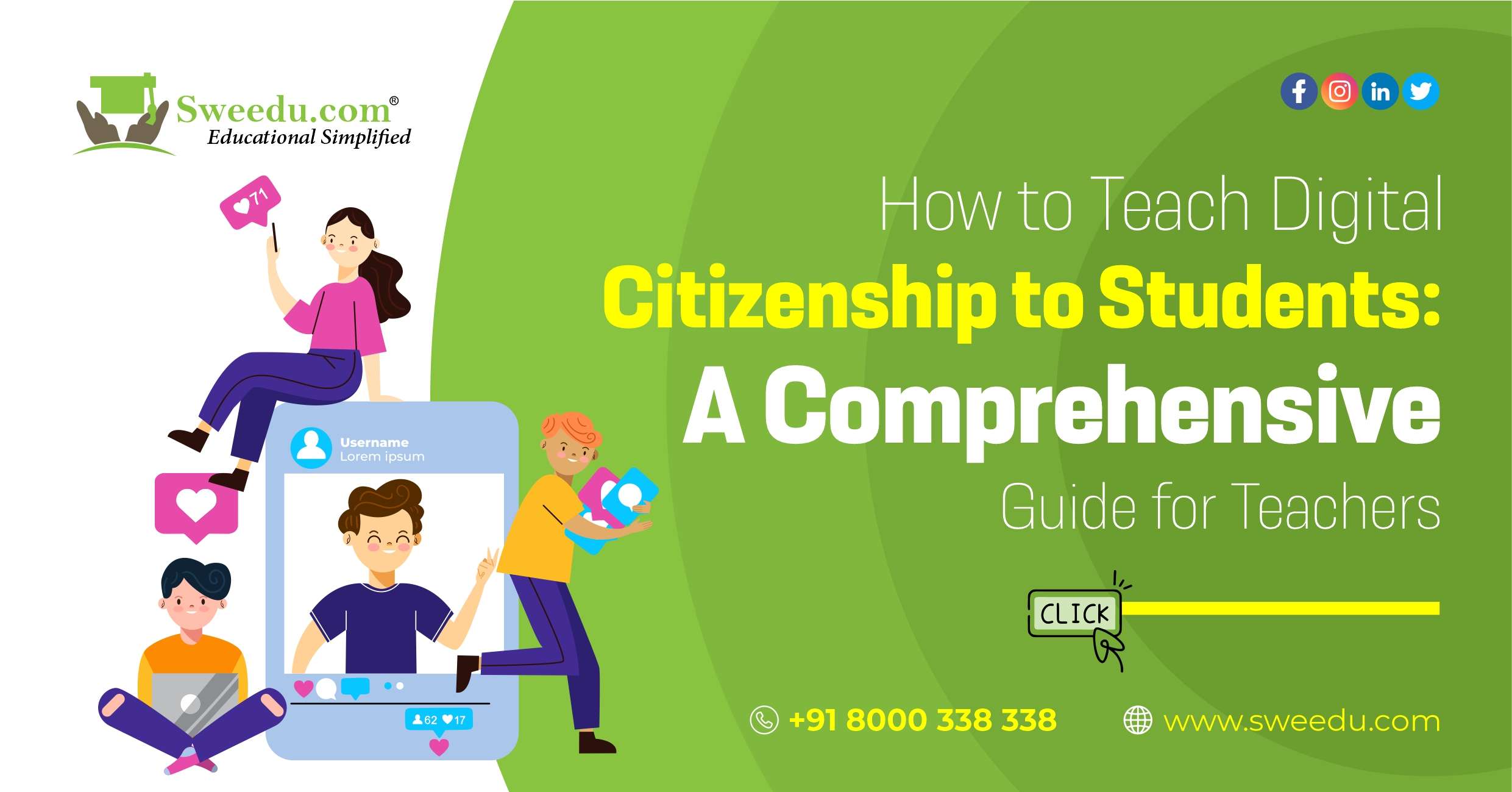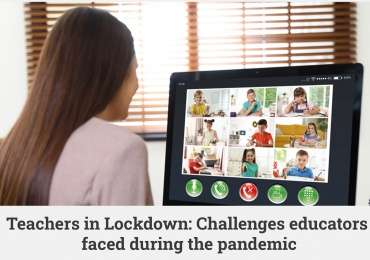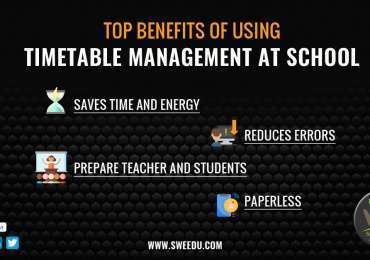
Digital citizenship is not just a learning topic, it is an important life skill that needs to be taught in classrooms. Be it for academic reasons or for daily usage, students need to have knowledge about it.
With education technology becoming a regular part of a student’s life, they need to learn about digital citizenship to safely understand and navigate this new digital reality. Thus, in this blog we’ll discuss the meaning, role, benefits of digital citizenship for a student. We’ll also discuss important teaching strategies that teachers can use to teach this important topic easily.
Whether you’re a teacher, a student or a concerned parent, this blog is for you. Let’s start with the basics.
What is the Meaning of Digital Citizenship?
Cambridge University defines digital citizenship as follows:
The state of being skilled in using the internet in order to communicate with others, buy and sell things, and take part in politics, and understanding how to do this in a safe and responsible way.
Why is Digital Citizenship Learning Important for Students?
Be it daily life or academic life, technology and the internet are becoming increasingly interwoven for a student. No matter a student’s age, knowing how to stay safe online, respect others opinions, and participate in a healthy way in our digital society becomes a necessity.
-
Digital Literacy
Digl literacy includes understanding how to use software, apps, and online resources, as well as being able to critically evaluate digital information.
Privacy Awareness
Show your students why it’s crucial to keep their online information safe and helps them understand how social media and companies gather and use their online activity data. You can help them be more mindful of what they share online.
Global Citizenship
The digital world exposes students to a wide range of global issues and perspectives online. This is exactly why it becomes necessary to teach students about cultural sensitivity and respecting diverse viewpoints.
-
Empowerment and Advocacy
Digital citizenship education empowers students to advocate for positive change. They learn how to use their voices online to raise awareness about important issues, promote digital equity, and contribute positively to their online communities.
Benefits of Teaching Students Digital Citizenship
Teaching students the basics of digital citizenship means you give them the tools that they need to successfully navigate the digital landscape. Let’s discuss the benefits in a bit more detail.
-
1. Responsible Internet Use
With digital citizenship, students can manage their screen time and build a balance between online and offline activities to not get addicted to technology. They can also protect themselves against cyberbullies, scams, and online predators.
2. Improved Decision Making
It encourages media literacy. Students learn to evaluate the credibility of online information, discern bias in media, and distinguish between fact and opinion. These skills are essential for informed decision-making in personal, academic, and professional lives.
3. Career Readiness
Digital literacy and skills are a bonus mark/attribute in a student’s academic profile. This is crucial since a lot of professional careers require digital skills as a requirement.
4. Build Online Relationships
With digital citizenship teaching, students know the do’s and don’ts of online behavior. So they can form healthy online relationships, and be kind in their interactions with other people and in triggering topics of conversation.
Now that we know how digital citizenship benefits students, let’s move on and discuss what are the main elements that need to be taught in this area.
Key Elements of Digital Citizenship for Students
While digital citizenship covers a range of elements, there are a few key elements that are a must to teach to students in the classroom.
1. Digital Communication
Teaching students how to communicate politely and respectfully in digital spaces, including email, social media, discussion forums, and messaging apps. This includes using proper language, avoiding offensive content, and showing empathy and kindness in online interactions.
Educating students about the importance of responsible content sharing, including verifying information before sharing it, avoiding the spread of false information.
2. Digital Literacy
Understanding how to effectively use digital tools, applications, and devices. This includes basic computer skills, navigating software and websites, and adapting to new technologies as they emerge.
3. Digital Ethics
Practicing responsible and ethical online conduct, which includes respecting the rights and privacy of others, citing sources when using online content, and avoiding plagiarism.
4. Digital Security
Understanding the importance of safeguarding personal information online, setting strong passwords, using two-factor authentication, and being cautious about sharing private data.
5. Digital Law
Familiarity with privacy laws and regulations that govern the collection, storage, and use of personal information online. With knowledge about digital laws students will know how to protect their own privacy.
6. Digital Rights & Responsibilities
Learning about the laws related to online harassment, cyberbullying, and defamation is important. Why? Because students need to know their rights and what they should do if they are victims of these actions.
7. Digital Balance
Promoting a healthy balance between screen time and offline activities. Teaching students to recognize signs of technology addiction and how to manage their digital usage for their well-being.
Now that we’ve discussed which elements of digital citizenship have to be taught to students, let’s move on to discuss how to teach these important elements.
Strategies to Use to Teach Digital Citizenship in Classrooms
Teaching students about digital citizenship is a long and tedious process. There’s an alternative to manual processes; utilizing school ERP software such as SWEEDU can simplify these tasks.
With the help of ERP software, you can monitor students’ online activities, identify those potentially facing cyberbullying or other concerns, and also manage lesson creation, scheduling, student progress tracking, and rapid feedback provision.
Now that we’ve covered how an edtech tool can help in implementation, let’s talk about some strategies you can use in your classroom to teach this topic.
-
Roleplaying Exercises
One of the simplest ways to teach a topic to students is with role playing exercises. Some examples to teach digital citizenship.
Scenario: You meet someone online who says they are from a nearby school and asks for your address.
Questions you can ask –
-
-
- What would you do?
- Would you give them your home address?
- Why or why not?
- What else could you do in this situation?
-
Art Projects
Your digital footprint is everything you do online, from the websites you visit to the photos you post on social media.
As a teacher, create a storyboard of your digital footprint. What kind of things would you share online? What kind of things would you keep private?
Then use your storyboard as an example to teach students. Once they get the gist, ask them to create a storyboard.
Invite Guest Speakers
A successful approach to teaching students about digital citizenship includes inviting guest speakers with varied backgrounds such as, law enforcement officers, social media specialists, human resources professionals, cybersecurity experts, ethical hackers, online privacy advocates, and tech entrepreneurs, who can provide valuable insights
Here are some specific examples of topics that guest speakers could talk about:
- How to identify scams/phishing attacks?
- How to deal with cyberbullying and trolling online?
- How to protect your private data online?
Create a digital citizenship classroom chart
This is a document that outlines the expectations for students’ behavior online. It can include things like:
-
- How to communicate respectfully with others online.
- How to cite sources when using information found online.
- How to use technology responsibly and ethically.
- How to report inappropriate content or behavior online.
Have students complete online safety quizzes or surveys
This can help students check how much they know about being safe online. You can make your own quiz or find one online to make learning about online safety fun.
For instance, you could take a quiz about how to stay safe from online bullies or a quiz about keeping your personal information private on the internet.
Incorporate digital citizenship into other subjects
This could include teaching students about copyright law in English class, or about the dangers of online predators in computer class.
For example, in English class, students could learn about copyright law by reading a book about plagiarism.
FAQ’s
a. Why is digital citizenship important for students?
Digital citizenship is important for students because it teaches them how to use technology responsibly and safely.
b. What are the objectives of digital citizenship?
The objectives of student digital citizenship include the following: ensuring safe technology usage, mastering the creation and consumption of digital content, and harnessing technology to foster positive experiences and make a beneficial impact on others.
c. What are digital citizenship skills?Teachers play a vital role in teaching students about digital citizenship
Digital citizenship skills include knowing how to protect personal information, respect others online, use technology ethically, be aware of the digital divide, and be responsible in digital consumption.
d. What is the role of teachers in digital citizenship?
Teachers have a crucial role in imparting knowledge about digital citizenship to students, covering various dimensions like online safety, privacy, copyright, and more.
e. What are the three main themes of digital citizenship?
The three main themes of digital citizenship are digital safety, digital literacy, and digital etiquette.
EndNote
Digital citizenship is an important topic to be taught to students. While it may be relatively new, understanding its meaning, benefits, and key elements can make it easier.
If you are still confused about teaching this topic, use any of the strategies given below.
-
- Roleplaying Exercises
- Art Projects
- Invite Guest Speakers
- Create a digital citizenship classroom chart
- Have students complete online safety quizzes or surveys
- Incorporate digital citizenship into other subjects
Also, teaching becomes easier and engaging with edtech tools. So, if your school does not have a school management software, make sure to show them this blog.
For more information on SWEEDU, you can refer to our other blogs.
And if you want to try out SWEEDU, start your FREE TRIAL DEMO today!




